You should cut the brown spots off your Pothos plant. It’s good to cut the leaves off about ¼ inch (about 2/3 cm) above them. This point should be where the leaf connects to the vine, called a node. That way, it can form new vines there.
You’ll need to take care to cut the Pothos in a way it won’t stunt its growth.
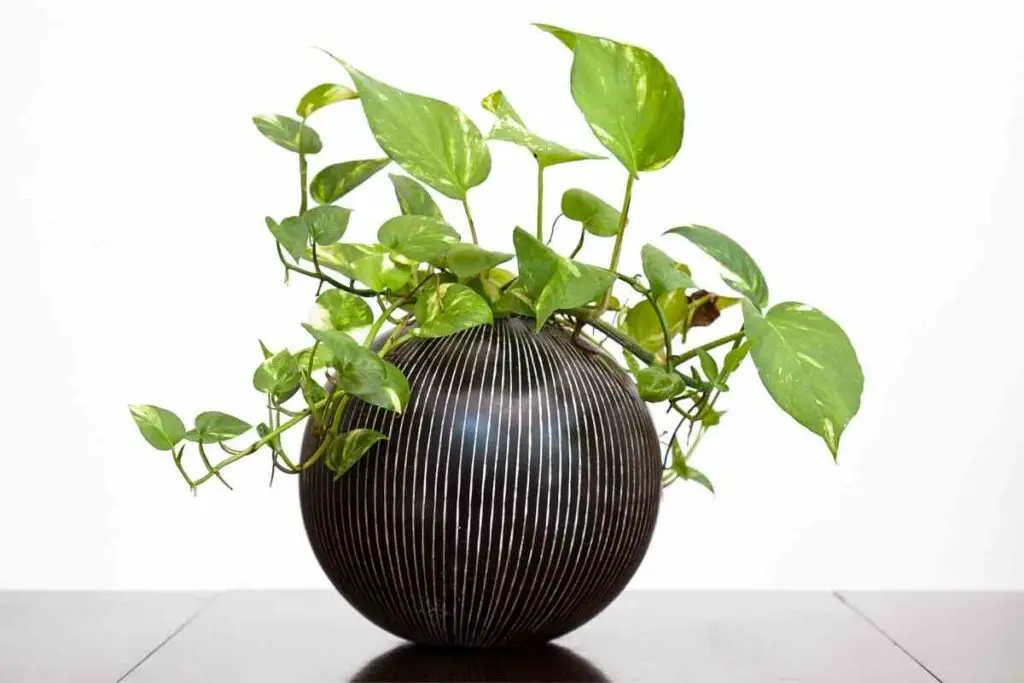
Brown spots indicate stress in the plant and cause it to wither quickly- taking care of them by removing these leaves right away helps.
There’s more to learn, so keep reading!
Table of Contents
When Do I Trim Brown Spots on Pothos?
Stem and leaf browning on a Pothos plant mean the plant needs changes to its environment because it’s stressed.
You’ll want to trim off the brown spots as soon as you see them.
These brown spots are already dead, so you won’t harm the plant if you cut them off.
Plus, browning can cause issues with the plant’s growth and health. Removing them as soon as you notice them helps the plant stay healthy.
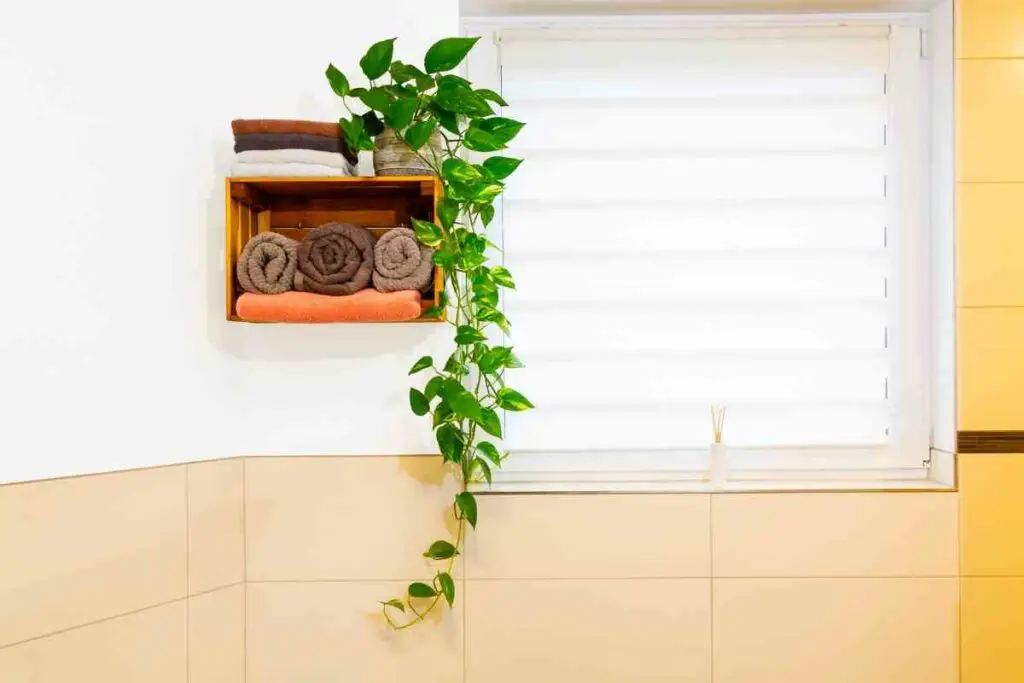
You can cut the entire leaf off if it’s mostly brown. You’ll want to leave more of the plant intact if it still is primarily green.
Cut around the brown section while trying to keep the general shape of the leaf. You cause less stress when you do it that way.
However, if many brown spots appear on the Pothos, you’ll need to change how you care for the plant.
The spots will come back after you cut them off if you don’t make any other changes besides trimming the foliage.
Why Are There Brown Spots?
Your Pothos plant forms brown spots on its stems and leaves for many different reasons.
These patches indicate stress in the plant, so changing how you care for it or its environment can help drastically.
If you want the plant to be healthy, you should act fast.
These are the main causes of brown spots and what you need to do to prevent them from again.
Temperature and Sunlight
Pothos plants prefer shade or partial shade; they can burn if you leave them in the sun.
You’ll want to move it where the sunlight can’t burn it, but it still receives enough light to grow.
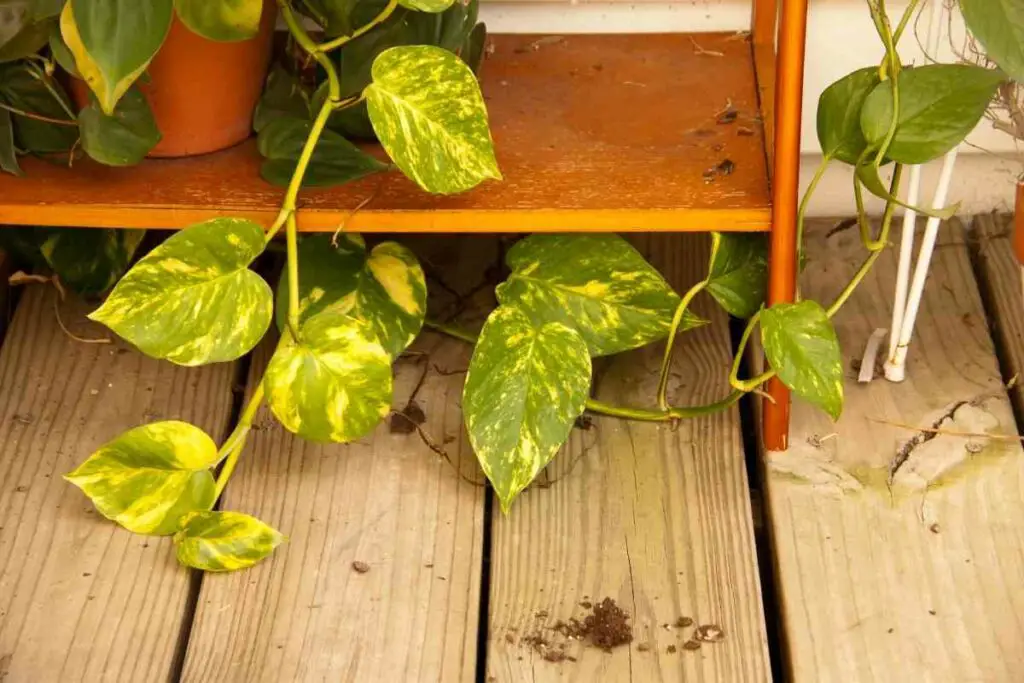
Pothos are also very sensitive to temperature changes. If it’s in a draft, touches a cold window, or it’s colder than 50 degrees F (10 degrees C), brown patches can form.
You can save the plant by moving it somewhere it won’t be too cold or in the direct sun.
Issues With Overwatering
Next, overwatering tends to be another factor in causing brown spots to form.
If you water the Pothos plant too frequently, it causes a lot of problems.
The soil can become too dense for the plant’s roots to absorb oxygen. Plus, it will have trouble absorbing nutrients.
You can fix this by changing how much and when you water the plant.
Don’t water it unless the upper section of the soil feels dry to the touch. Then, offer the plant slightly less water than you were giving it before.
Your Pothos plant only needs watering every one to two weeks.
You’ll have to water it less often when you have it in partial shade than in the light.
Have You Noticed? You’ll know it needs water when the leaves start to droop a small amount- but before they collapse completely!
Disease or Pests
Lastly, brown spots can indicate that disease or pests are present in the plant.
If that’s what happened, you’ll often notice a yellow ring around the brown patch, meaning there’s a bacterial infection.
Stress in the plant makes it more likely to get sick, so you’ll want to ensure you’re taking care of it as best as possible.
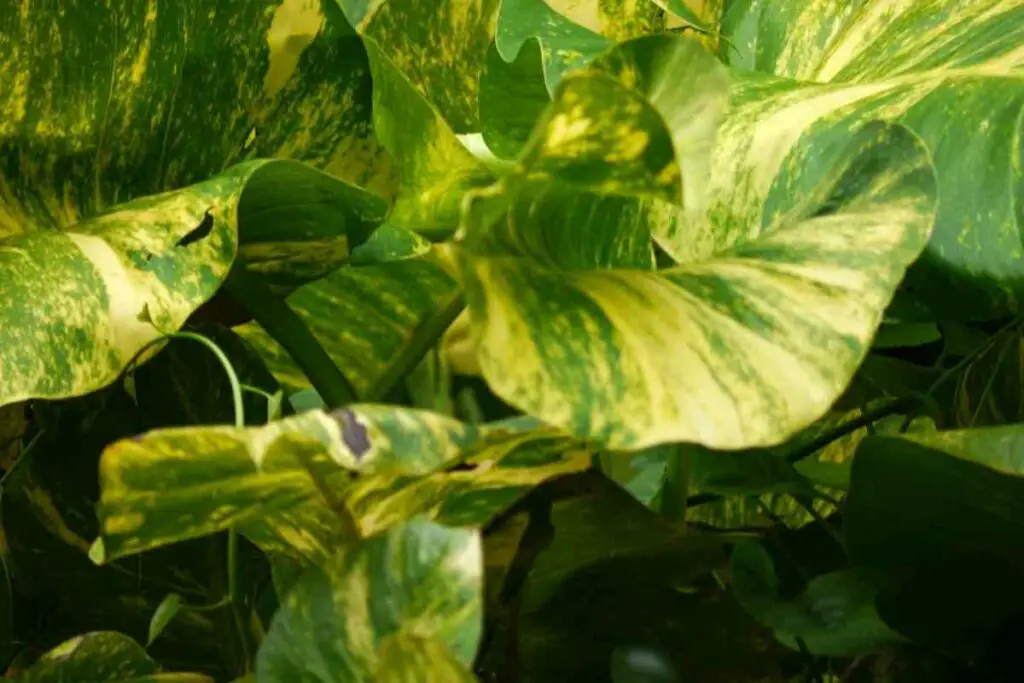
Give it space from other plants and lower the humidity around it. Then, make sure you have ample air circulation in the room.
Cut off all the infected leaves, then wash your hands to prevent spreading the disease to other plants.
If There Are Pests – You can kill them with insecticidal soap or take the plant outside and gently spray them with a hose. Doing so should wash all of the bugs away.
How Do I Cut Brown Spots Off a Pothos Plant?
First, grab a pair of clean clippers.
Cut the leaves off at the node, about ¼ inch (about 2/3 cm) above the leaves.
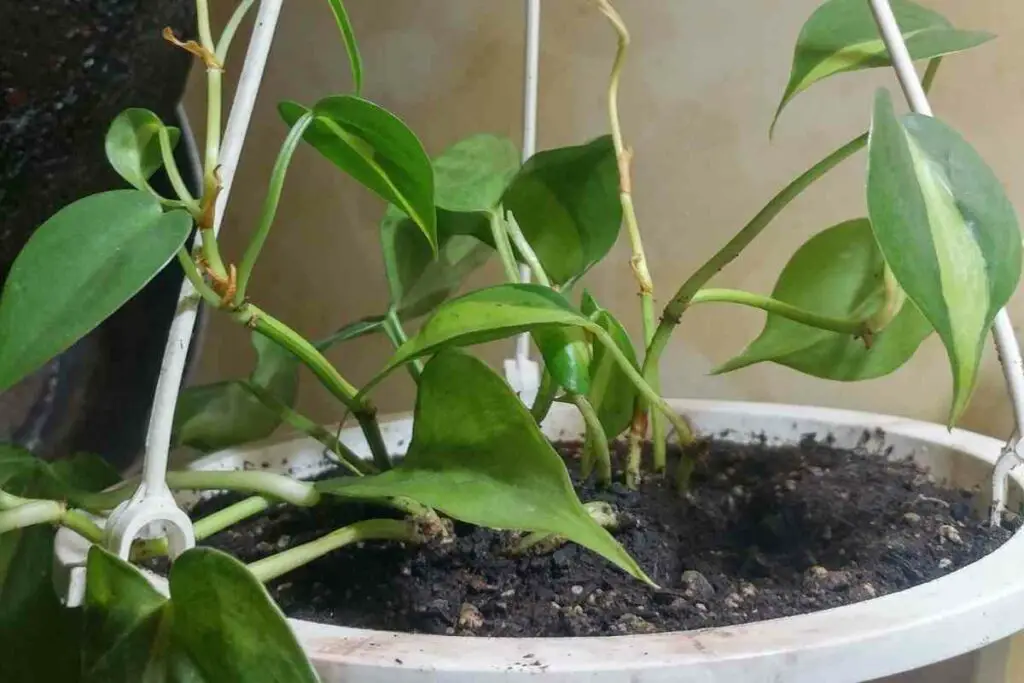
Doing so encourages a new vine to start in that area. So, while you do lose that one leaf, the plant should continue growing.
After Trimming the Foliage – Sanitize your clippers by wiping them with rubbing alcohol. Then wash your hands.
You’ll want to make cleaning often a habit when handling brown spots since they’re a bacterial infection.
That way, you don’t spread it to other plants you have inside.
You want to remove the entire brown area to revive the Pothos plant fully.
Why Should I Cut Brown Spots Off a Pothos?
You should always cut the brown spots off of your Pothos.
Generally, you want to remove the foliage when the leaf is more than 50% brown. You can save the leaf if there’s more green than brown.
However, if it’s too close to tell, you may want to remove the entire leaf anyway.
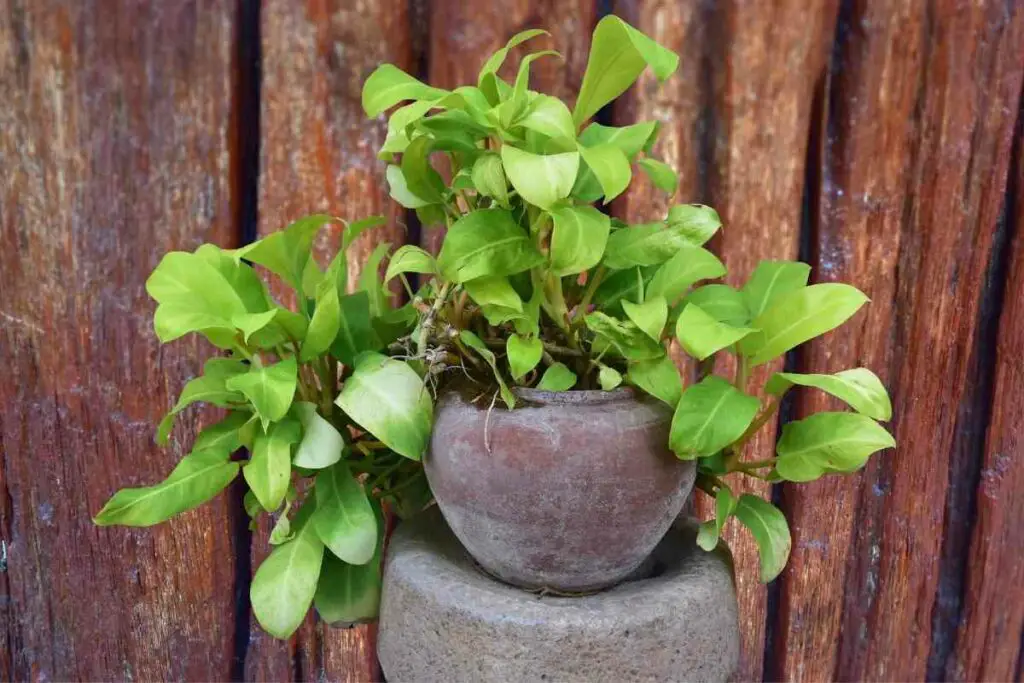
When you cut the leaves off, you let the remaining, healthier leaves access more nutrients.
That way, the plant can continue growing and won’t wither. Plus, it makes the plant look a lot nicer when it’s healthy!
You can just cut the brown portion out if the brown areas are small. Leave a very small line of the brown in place so you don’t cut into the healthy plant.
If you do cut the healthy section, it opens a wound on the leaf, which causes the plant more stress.
Overall – You need to remove browning portions from the plant. Leaving them there for too long is sure to cause more harm to the plant than if you were to cut them off.
Conclusion
You should cut the brown spots off your Pothos plant.
You’ll need to take care to cut the Pothos in a way it won’t stunt its growth.
Stem and leaf browning on a Pothos plant mean the plant needs changes to its environment because it’s stressed.
Generally, you want to remove the foliage when the leaf is more than 50% brown. You can save the leaf if there’s more green than brown.
However, if it’s too close to tell, you may want to remove the entire leaf anyway.
Posts You Might Like
- How to Dry Basil Leaves: A Professional Guide
- Is an Avocado a Fruit or Vegetable? Simple Answer and Explanation
- Does Pineapple Have Seeds? Exploring the Anatomy of Pineapples
- Blooming Through Winter: Can I Grow Vegetables Indoors in the Winter?
- What Can You Grow in a Greenhouse All Year Round: A Guide to Year-Round Greenhouse Gardening
- Are Blueberries Blue? Debunking the Myth of Their Color
















